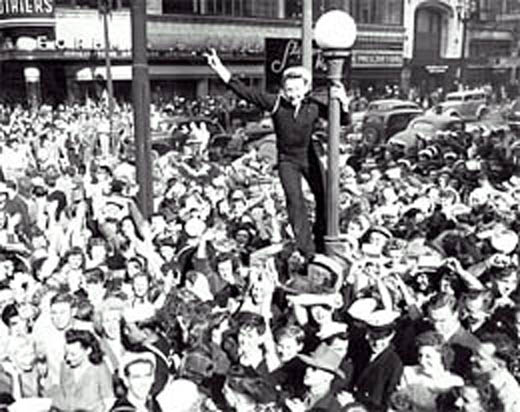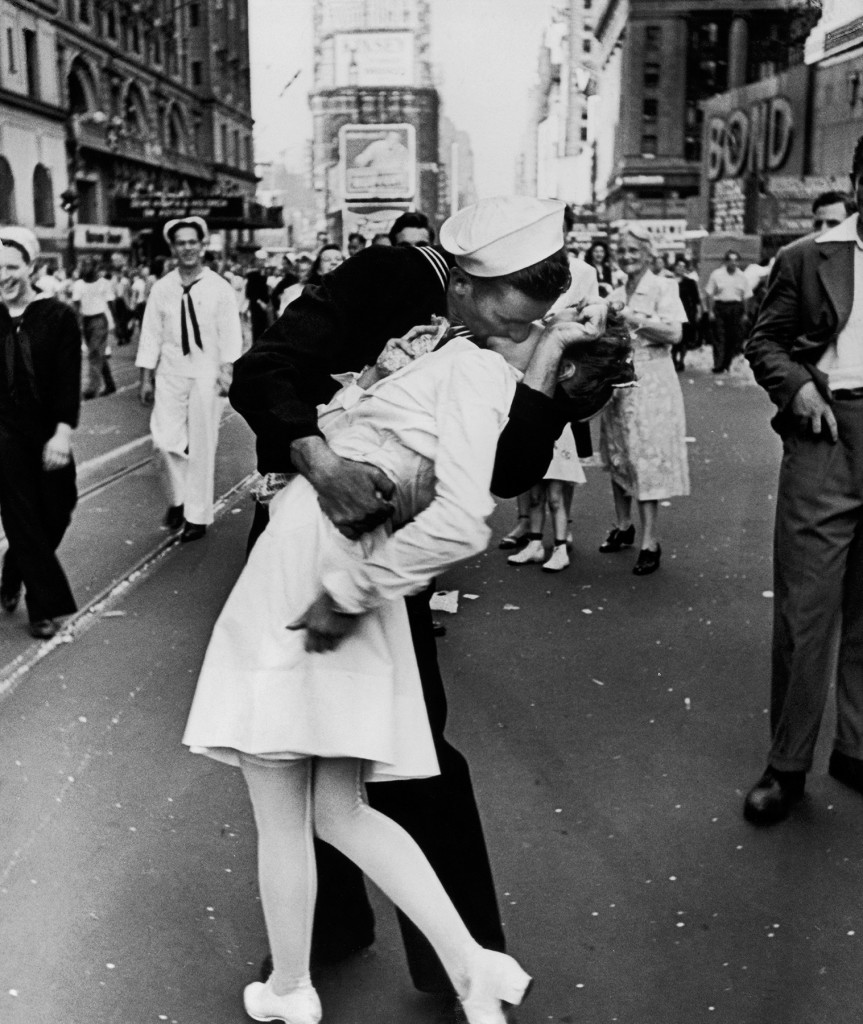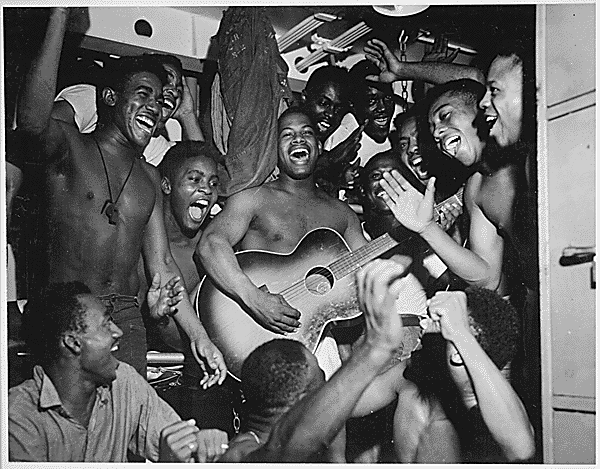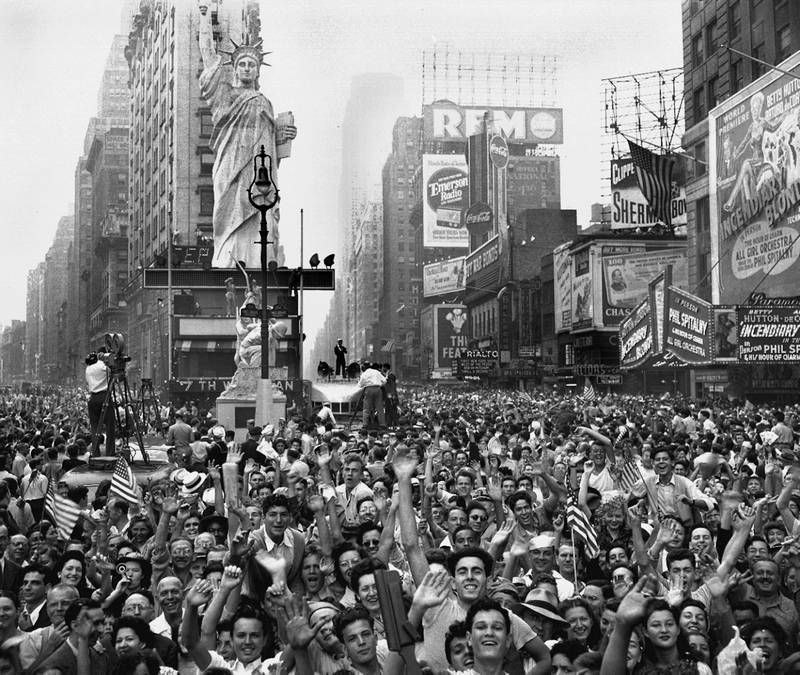Air Operations, Japan
- 157 58th Very Heavy Bomb Wing B-29s attack the naval arsenal at Hikari.
- 145 73rd Very Heavy Bomb Wing B-29s attack an arsenal at Osaka.
- 108 313th Very Heavy Bomb Wing B-29s attack rail yards at Marifu.
- 8 B-29s attack targets of opportunity.
- In the VII Fighter Command’s final mission of the war, more than 160 fighter-bombers based on Iwo Jima escort B-29s over Japan and, upon release, attack airfields and military targets in the Nagoya area.
- 1 P-47 is lost.
- In the FEAF’s final missions of the war, V Bomber Command B-25s, and V Fighter Command and VII Fighter Command P-47s and P-51s attack Japanese warships and shipping between Kyushu and Korea.
- In the USAAF’s final fighter engagements of World War II, 110th Tactical Reconnaisance Squadron F-6s down 4 Ki-43 'Oscar' fighters near the Fukuoaka airfield on Kyushu betwen 0930 and 0937 hours. A 318th Fighter Group P-47 downs a Ki-84 'Frank' fighter near Osaka at 1030 hours. 507th Fighter Group P-47s down 3 A6Ms Zeros, 2 Ki-43 'Oscar' fighters, and a Ki-44 'Tojo' fighter near Kyoto between 1040 and 1130 hours. A 413th Fighter Group P-47 downs a Ki-84 'Frank' over the Kaneyama airfield at noon. In the very last USAAF fighter engagement of the war, 8th Fighter Group P-38s down 5 Ki-84 'Frank' fighters off southern Honshu at 1215 hours.
- In the war against Japan, from December 7, 1941, onward, USAAF fighter pilots are credited with downing 5,214 Japanese airplanes in every part of the war zone.
- The Government of Japan accepts the Allies’ tender to surrender unconditionally.
- During the night, in the 20th Air Force’s final missions, 86 73rd and 314th Very Heavy Bomb Wing B-29s attack Isesaki. 81 313th and 314th Very Heavy Bombt wing B-29s attack Kumagaya. 132 315th Very Heavy Bomb Wing B-29s (in the longest single-stage round-trip mission of World War II—3,650 miles) attack an oil facility at Tsuchizaki. 39 504th Very Heavy Bomb Group B-29s sow mines off 4 Japanese port cities.
- 2 B-29s attack targets of opportunity. Before the B-29s return to their bases in the Marianas, President Harry S Truman announces the cessation of hostilities.
Air Operations, Pacific
In the final raid of the war, B-29s attack Kumagaya, Isesaki, and Akita.
[Air Operations, Philippines
During the night, upon the formal declaration that hostilities have ceased, the US 11th Airborne Division leaves for Okinawa by air, en route to occupation duty in Japan.
[China
The Russians have routed the Japanese Kwangtung Army and penetrate between 100 and 250 miles into Manchuria, occupying a number of towns including Mukden. They also proceed with the occupation of Sakhalin and the Kurils.
[Japan
At a government meeting Emperor Hirohito decides to end the wranglings of his politicians and orders that the war should end. He records a radio message to the Japanese people saying that they should 'bear the unbearable'. At 11:00p.m. over 1,000 soldiers attack the Imperial Palace to prevent the message being transmitted, but they are driven off by the palace guards, faithful to the Emperor. The Japanese decision is transmitted to the Allies and it is announced by them that Japan accepts unconditional surrender. On receipt of the news of the surrender, the Americans get ready to occupy Japan.
Since the event it has often been debated what the final cause was that made the Japanese decide to surrender. Examination of Japanese records and of the people concerned seems to show that it was from a combination of the threat of atomic attack, but also and perhaps predominantly from the defeat by the Soviets of the Kwantung Army.
[Pacific
- The US submarine Torsk (SS-423) sinks Japanese Coast Defense Vessel No.13 and Coast Defense Vessel No.47 in the Sea of Japan.
- Mines laid by USAAF B-29s sink the Japanese gunboat Hirota Maru off Mutsure, Japan; the cargo ship Mikamasan Maru (865t) off Korea; and merchant cargo ships Yojo Maru (2220t) in Osaka harbor and Kashima Maru (2211t) off the coast of Korea.
Southwest Pacific
Upon the announcement of the president that Japan has surrendered, the 11th Airborne Division leaves the Philippine Islands by air for Okinawa, where it is prepared to deploy as the initial occupation force for Japan.
[Images from August 14, 1945
|
|
|
|



